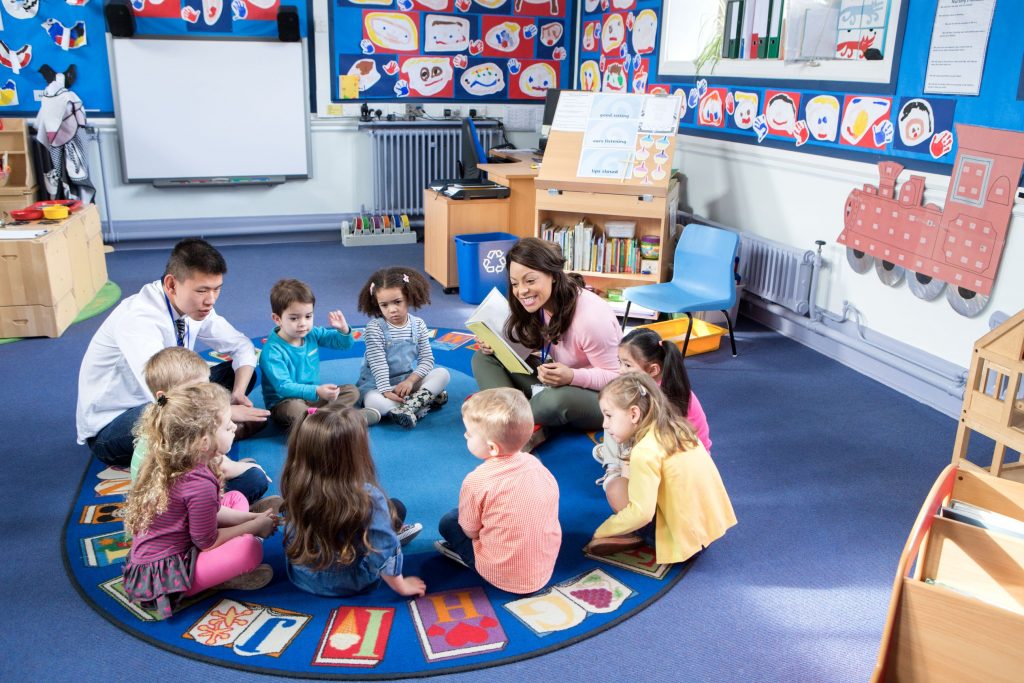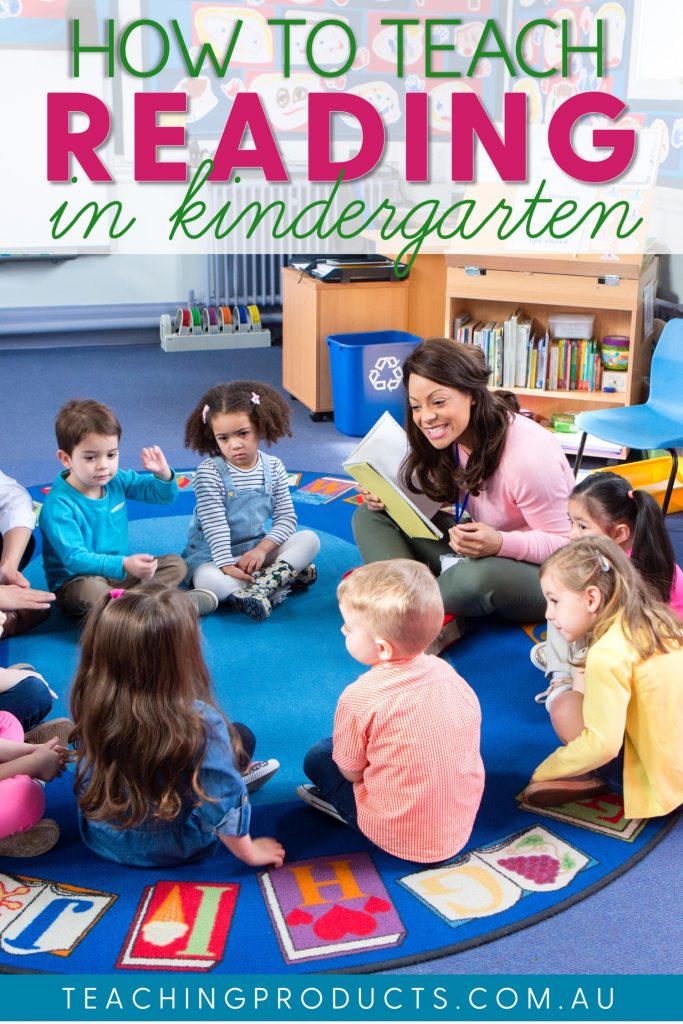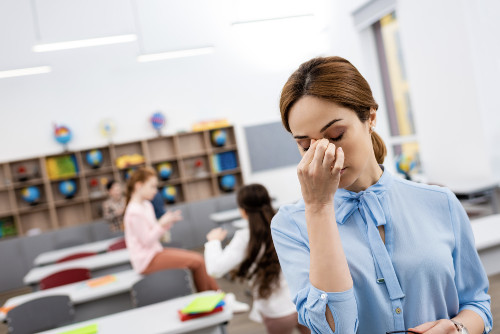This content may contain affiliate links. Please read my disclosure policy to learn more about this.

You have your teaching degree, you are a qualified teacher, but do you really know how to teach reading in kindergarten? Do you know when to teach phonics, blends, digraphs, trigraphs, how to assess phonological awareness, why we need to teach high frequency words, or why word families are important? If you answered no, then don’t worry – I didn’t either when I first started teaching.
Wait, what?!
Yep, you totally read that right! Sure, I knew the theory of it all, but I didn’t really understand how it all came together to teach a child to read. When I first sat down to plan a reading lesson, I had no idea where to even start. I had students who knew no letters, and students who could read some basic words. I felt completely overwhelmed. I’ve since realized that there really is no ‘right’ or ‘wrong’ way to teach reading (or anything else!). As long as you’re supporting your students at their point of need, then they’ll (hopefully) be learning.
The Most Important Point About Teaching Reading
It’s super important to remember that each student is an individual and they all have different knowledge. We really can’t compare the student who knows three-letter sounds with the student who can read 97 high frequency words. These students already have different prior knowledge and we need to be teaching at their individual point of need. I know, this makes it really challenging when thinking about how to teach reading in kindergarten!
Where to Start
In order to become independent readers, children need to master the basic tools needed to understand what they see in printed texts. They need to be able to hear and manipulate the sounds, visually recognize the letters, connect letter patterns to their sounds, and then apply all of this knowledge every time they come across a new word in a book. Sounds complicated, right?! I’m not going to lie to you, there’s a lot involved with teaching children to read. I use an evidence-based approach in my classroom (have you heard of the science of reading yet?!), which includes a range of language-based and literature-based activities. This includes explicit instruction in each of the following areas:
- Letter recognition – recognizing and naming each letter of the alphabet
- Letter Sounds – understanding that each letter of the alphabet represents the sounds of our spoken language
- Phonemic awareness – understanding that spoken language is made up of individual sounds (phonemes), and then being able to blend, segment, and manipulate these sounds
- Phonics – the use of sound/spelling patterns to identify written words
- Decoding – connecting written letter patterns with sounds to produce a spoken word
- Word attack skills – recognition of high frequency words, identifying smaller parts of words (syllables, affixes, base words, phonograms), and use of context
I know that comprehension could also be included here, but I’ve intentionally left it out to focus this post on the tools that children need to read a simple text. I’ll add a post about comprehension at a later date.
I generally include explicit instruction on each of these areas in short bursts. This allows students time to practice the skills. It also provides appropriate reading materials that allow students to explore the skills they are learning. Students who are struggling readers will also have extra support from me via more explicit teaching or supported practice.
What I Provide for my Students
With the right books (decodable books are best!), this really is quite simple. Providing a range of text types for students to explore is crucial to my reading program. I have a dedicated space in my classroom for our ‘classroom library’. It’s stocked with a range of books – fiction, non-fiction, various genres, high interest, student choice, etc. Having such a variety of books to choose from allows students to practice their skills using a meaningful, high-interest approach. Also, providing opportunities for children to explore books together, and with adults is crucial. I hear every student read on a daily basis. Students also have opportunities to read to each other, I read to them, and our amazing parent-helpers also listen to our readers. We have discussions about what we’re reading, and we take books home to share with families. There is a lot of research out there that shows some children have learned to read by being read to regularly (just Google ‘whole word approach to reading’). Note that I said some children learn to read this way. Not all. It’s important to remember that.
Reading Procedures
The aim of my reading lessons is to produce confident, independent readers. To achieve this, I use a range of procedures to provide a strong foundation for my students to build upon. These procedures provide a meaningful opportunity for students to focus on selected elements of the reading process. The reading procedures that I use are:
- Reading to students
- Modeled reading where I demonstrate how to read each word – identify and blend the sounds
- Language experience
- Shared reading
- Book discussion groups
Modeled reading, reading to students, and language experience all allow me to demonstrate how students can use different strategies to make sense of the text. Shared reading allows students to practice the strategies with support and guidance from myself. Finally, students practice their skills through book discussion groups.

What Next?
In my next blog post, I’ll show you exactly how I assess reading skills to determine where each student is at with their learning. This will be a great post to read, I’ll even be sharing my letter and letter-sound knowledge assessment tool with you (for free!).



Thanks for your input on teaching kindergarteners to read. I especially like the idea of your stash of high-interest books. When we homeschooled, I always had lots of those for our daily free-reading times. Thanks for an informative post.
It’s a privilege to be part of the lives of these children, I am also a kindergarten teacher and it’s amazing to discover the different ways that children learn. I usually let them get familiar with the word families and try to add more words to make their own sentence. Thank you for sharing some tips.